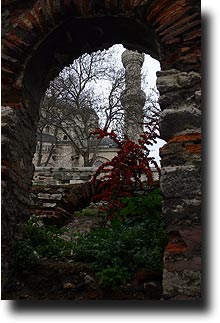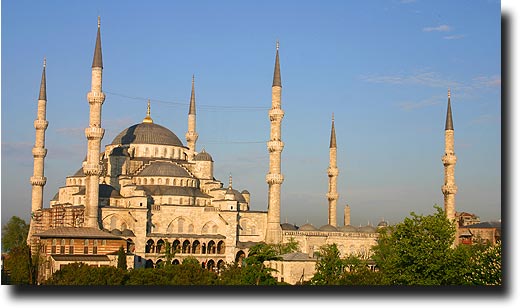

|
|
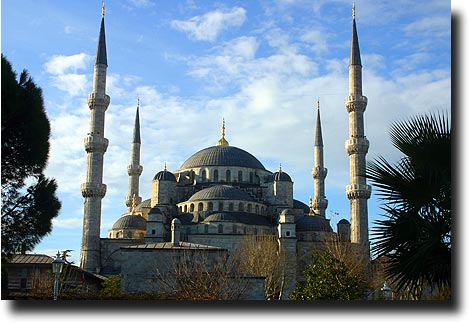
in the morning... |
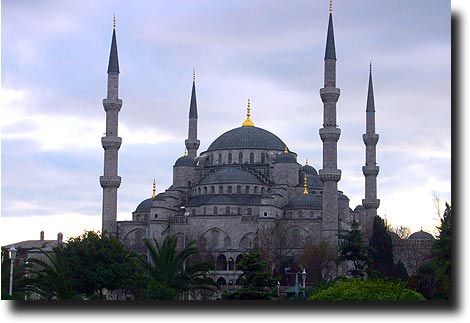
around noon... |
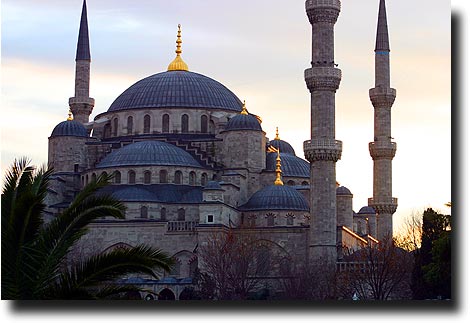
and in the evening... |
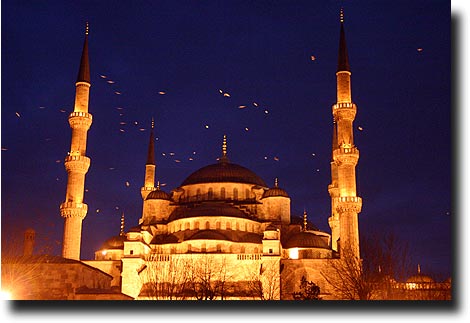 |
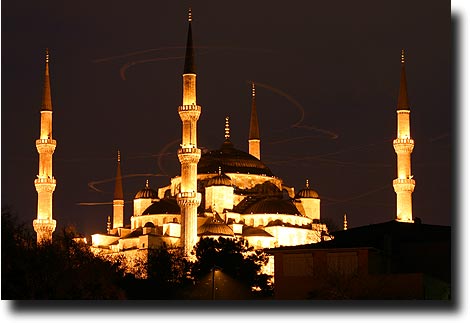 |
|
|
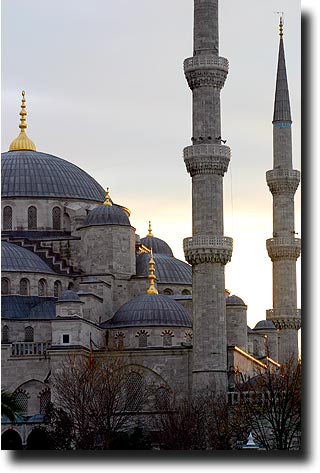 |
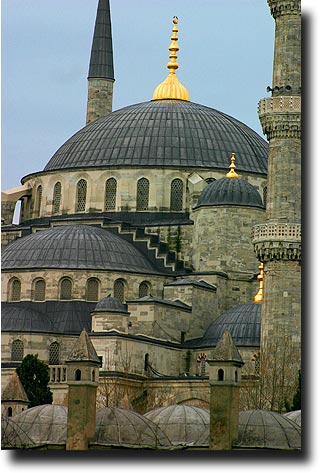 |
|
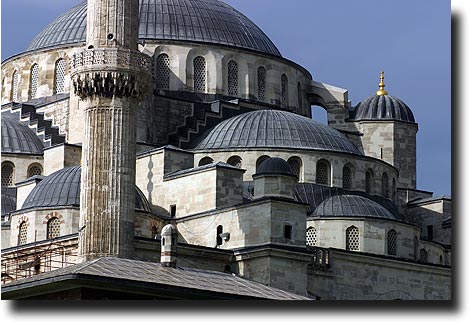 |
||
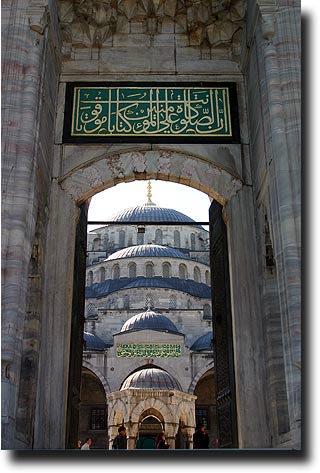 |
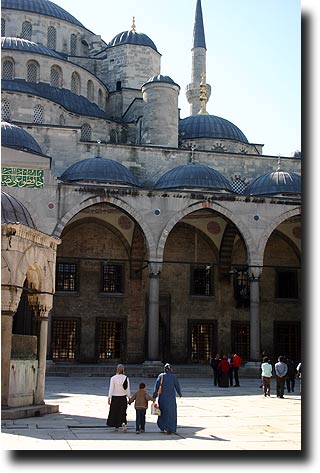 |
|
|
|
||
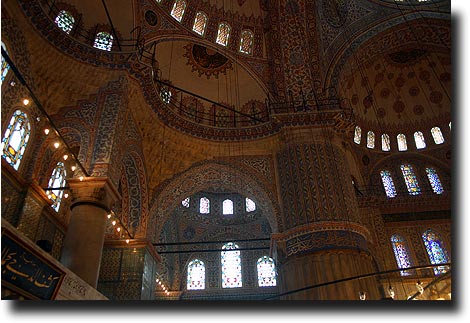 |
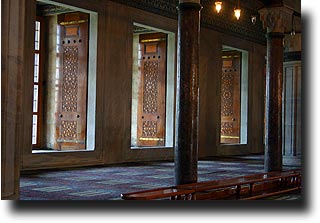
The layout is classic Ottoman style; a fore-court with an ablutions fountain and covered walkways all around. The interior has a vast array of blue Iznik tiles, hence its name the Blue Mosque. Inside the mosque, the huge dome is held up by four enormous pillars, testament both to the weight of the rock above and the unthinkable achievement of the dome of the Hagia Sophia - supported solely by smaller sub-domes and not by leg-like pillars. |
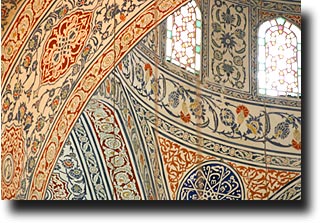 |
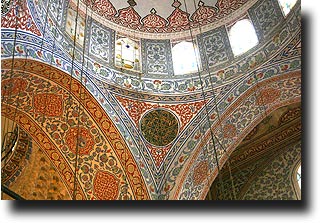 |
|
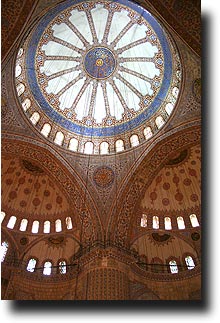 |
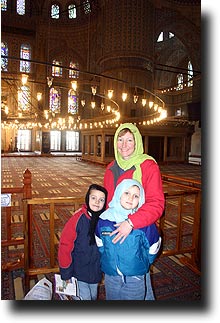 |
|
|
|
||
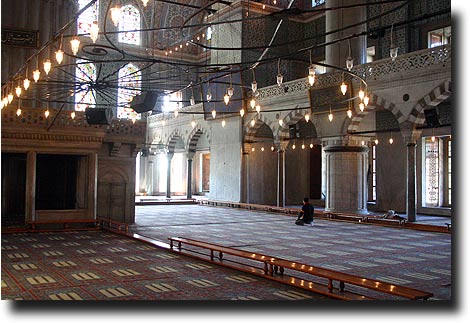
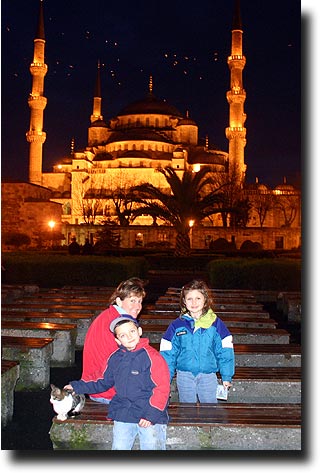
|
|
